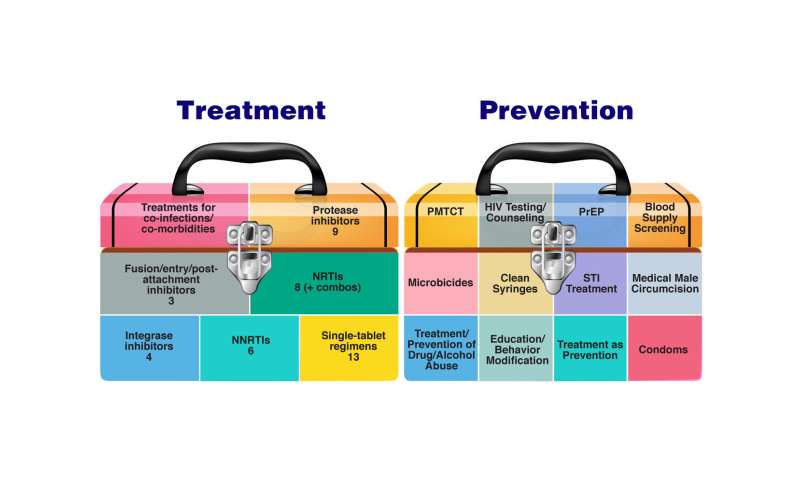

Optimal implementation of existing HIV prevention and treatment tools and continued development of new interventions are essential to ending the HIV pandemic, National Institutes of Health experts write in a commentary Clinical Infectious Diseases.
Today, many highly effective HIV treatment and prevention interventions are available. Antiretroviral therapy (ART) not only improves the health and prolongs the lives of people with HIV but also plays an important role in HIV prevention. People living with HIV whose virus is durably suppressed to undetectable levels by ART cannot sexually transmit HIV to others, a concept known as Undetectable=Untransmittable, or U=U. Antiretroviral drugs taken by people without HIV as pre-exposure prophylaxis (PrEP) are highly effective at preventing acquisition of HIV.
Theoretically, the widespread provision of ART and PrEP could end the HIV pandemic. However, a gap exists between theory and reality, write Anthony S. Fauci, M.D., director of NIH’s National Institute of Allergy and Infectious Diseases (NIAID), and colleagues. Implementation gaps exist at all stages of the HIV care continuum. Progress in cities like San Francisco, which has dramatically reduced new HIV cases by deploying ART, PrEP and other tools, suggests that these gaps can be overcome. Such examples offer lessons for optimizing implementation strategies.
Even with the availability of simplified HIV drug regimens, medication adherence remains a challenge for many. Thus, there is a need to develop new treatment and prevention strategies and products that can be efficiently taken up by people from diverse communities. Potentially, these new tools will have improved efficacy and broader uptake due to better acceptability and usability.
Source: Read Full Article